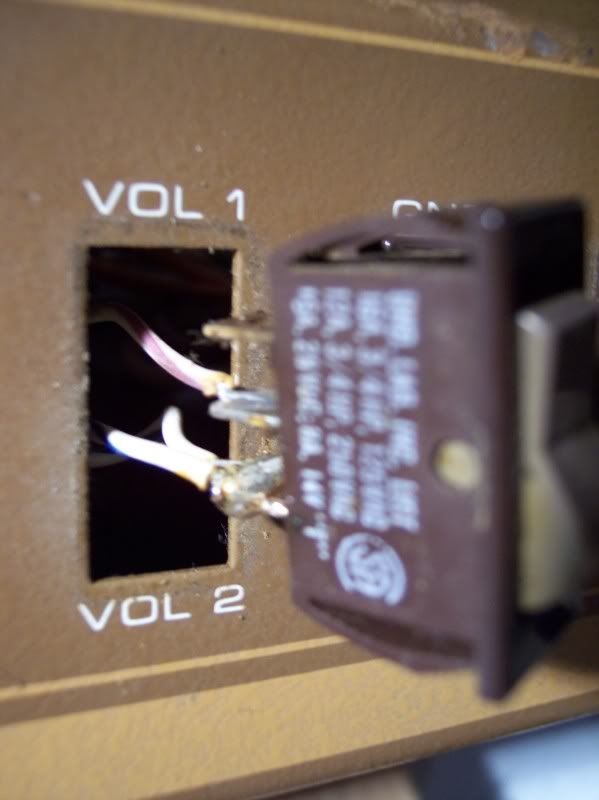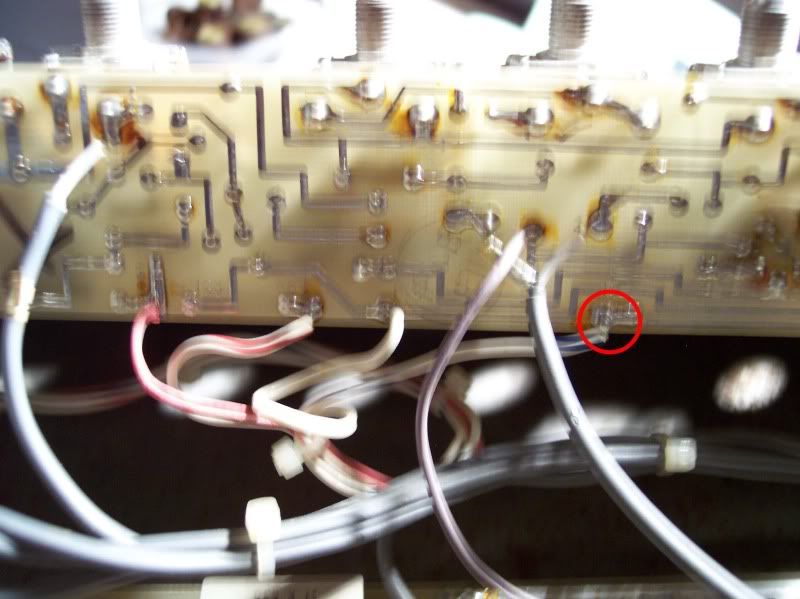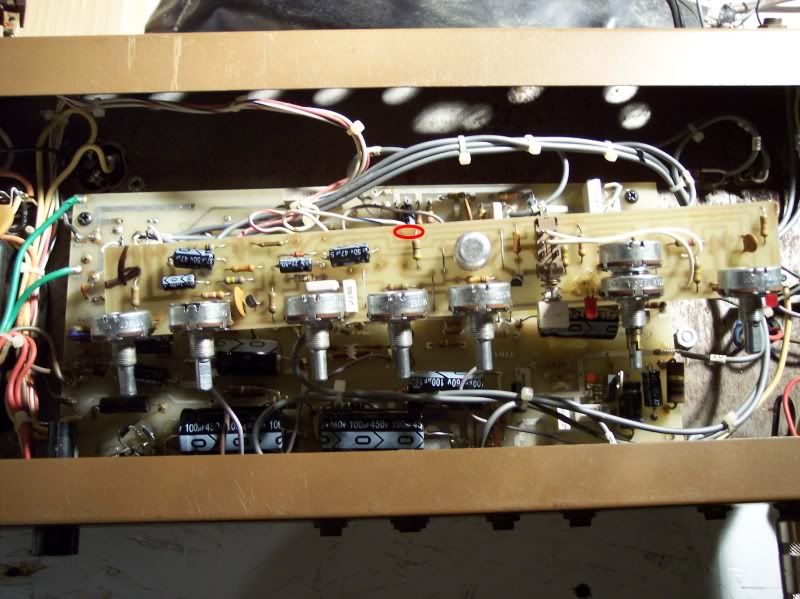This amp had a nasty Channel 2 gain squeal that changed smoothly with the Channel 2 gain pot.
Ok, I just finished swapping out all the capacitors. Got some new fuses from Rat Shack, since I blew one testing the amp right after replacing the large dual filter cap. The fuse fit the holder like a glove, whereas the old one was quite loose. Tested the amp by turning it on without tubes. No problem. Turned it on by adding preamp tubes one by one. No problem. Put in the two 6L6's. Lights come on for both channels (individually when the switch is flipped). No fuse issue. Turned the amp off, connected a speaker and a guitar. I get a low level normal guitar amp noise with all pots at zero except master volume. Moment of truth, channel 2 turning up the gain and the volume. No squeal. Testing the guitar, no sound from the guitar... Uh oh.
Could it be a bad tube? If so, is it more likely to be a preamp or output tube? I've got a few preamp tubes to swap out, but I don't have any spare 6L6's. I'll have to cannibalize an amp we're using. I don't want to sacrifice good 6L6's just repairing an amp if I don't have to, but I'm willing to give it a go if anybody thinks it's unlikely to hurt them.
[Edit] Put three known working 12AX7's in. Now channel 2 works perfectly. All the tone controls and the reverb control responds as expected. But... channel 1 stopped responding. I still get nothing from it. Confused again...
For the rest of the back story, check this thread. I felt it made more sense to have a thread about repairing the G60T, since I'm no longer looking for an amp tech...
Ok, I just finished swapping out all the capacitors. Got some new fuses from Rat Shack, since I blew one testing the amp right after replacing the large dual filter cap. The fuse fit the holder like a glove, whereas the old one was quite loose. Tested the amp by turning it on without tubes. No problem. Turned it on by adding preamp tubes one by one. No problem. Put in the two 6L6's. Lights come on for both channels (individually when the switch is flipped). No fuse issue. Turned the amp off, connected a speaker and a guitar. I get a low level normal guitar amp noise with all pots at zero except master volume. Moment of truth, channel 2 turning up the gain and the volume. No squeal. Testing the guitar, no sound from the guitar... Uh oh.
Could it be a bad tube? If so, is it more likely to be a preamp or output tube? I've got a few preamp tubes to swap out, but I don't have any spare 6L6's. I'll have to cannibalize an amp we're using. I don't want to sacrifice good 6L6's just repairing an amp if I don't have to, but I'm willing to give it a go if anybody thinks it's unlikely to hurt them.
[Edit] Put three known working 12AX7's in. Now channel 2 works perfectly. All the tone controls and the reverb control responds as expected. But... channel 1 stopped responding. I still get nothing from it. Confused again...
For the rest of the back story, check this thread. I felt it made more sense to have a thread about repairing the G60T, since I'm no longer looking for an amp tech...




Comment